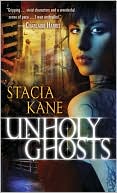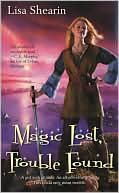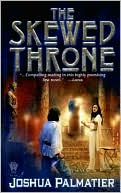Judging the Past Through the Lens of the Present
Today’s rant comes courtesy of debates about Robert Heinlein. Tor.com has an ongoing discussion about Heinlein and his work, one which has spilled into Twitter and a number of blogs. Stirring up the anger and ire: claims that Heinlein and/or his work is sexist (possibly racist as well?)
Responses to these claims range from the thoughtful to the religiously righteous. Fair enough, as the initial accusations probably span that same range. But I want to focus on two kinds of responses.
1. “[I]t is fallacious to judge deceased writers by the political fads and fashions of the modern era.” I.e., it’s unfair to judge Heinlein, because his work is “a product of the time.”
Taking that train of thought further, is it unfair to judge the American colonists for the attempted genocide of the Native Americans, because that was just a product of the time? Is it unfair to condemn slavery, because times were different back then?
Historical context is important. It’s also good to recognize the lens through which we’re analyzing a text, whether that lens is political, theoretical, or whatever. And I’m well aware that many countries view the United States’ attitudes toward racism and sexism as a bit wacky. But to claim that just because your perspective is, like Heinlein’s, grounded in a particular time and culture, it’s therefore invalid and/or fallacious is … well, a little silly.
I can read Tarzan and recognize that views on race were different in Edgar Rice Burroughs’ time. I can also argue that, given Tarzan’s casual murder of blacks in the jungle, and a text that treats these incidents in precisely the same way as the hunting of animals, there’s racism here.
Is the historical context different than if the book were written today? Sure. And I recognize that my own moral framework is far from perfect. Does that mean I’m not allowed to feel disgust at Tarzan’s joy in killing “savages,” or to talk about the racism in that portrayal? Give me a break.
2. Then there’s “How dare you call Heinlein sexist?”
There is a valid point here. As an author, it makes me uncomfortable when people blur the work with the writer. I’d hate to think of someone reading the goblin books and deciding Jim C. Hines is a closet cannibal, for example. The work =/= the writer, and I think we need to be aware of that distinction.
Going back to Tarzan, it’s clear that Tarzan never considers blacks as human. For much of the book, he doesn’t even view himself as human, for that matter. This is the character’s attitude … but the text never questions this attitude. Even after Tarzan learns of his own humanity, he never makes the connection that those dark-skinned beasts were people. The text supports Tarzan’s view, and you can argue that this is due to racism on Burroughs’ part.
But there are those who’ll say “racist” or “sexist” are the nuclear option, nothing but insults intended to destroy the recipient. If you dare utter those words, you aren’t interested in conversation or discussion; you’re just name-calling, trying to slander poor Burroughs.
…which makes it kind of difficult to talk about issues of race and gender and discrimination and so on. But then, sometimes I think that’s the point: to shut down discussion.
If you want to examine the distinction between author and work, and to argue for one or the other, then great. I love debating literature and exploring different interpretations. On the other hand, if you’re just going to say “Hey, you called Heinlein the S-word! You can’t do that!!!”, then to me, you’re simply announcing your unwillingness to discuss or listen.







 This was in the back of my mind as I read Unholy Ghosts
This was in the back of my mind as I read Unholy Ghosts  My first sale was Magic Lost, Trouble Found
My first sale was Magic Lost, Trouble Found 




 My first professional novel sale was The Skewed Throne
My first professional novel sale was The Skewed Throne